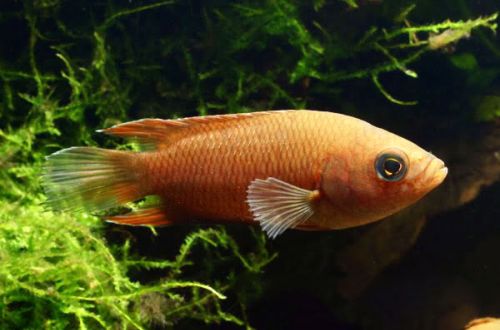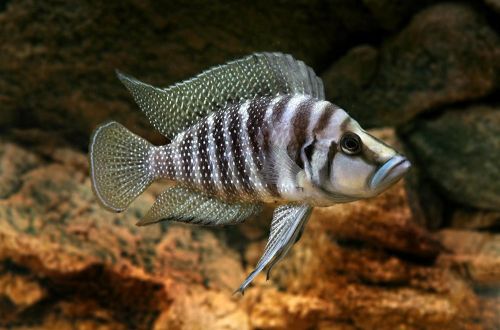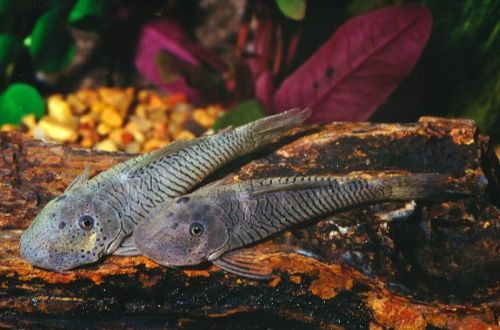
Bellontia Signata
Belontia Signata, scientific name Belontia signata, belongs to the Osphronemidae family. For its aggressive disposition, it is sometimes referred to as the “Battle Fish of Sri Lanka”. Not suitable for the general aquarium, it is recommended to keep alone or in pairs. Easy to keep if accustomed to dry food, otherwise it may be difficult to find live foods.

Contents
Habitat
Endemic to the island of Sri Lanka in Southeast Asia, located near India. It lives in rivers and small streams flowing through the rainforest. Prefers regions with slow currents, clear water, sandy or rocky substrates and dense coastal vegetation.
Brief information:
- The volume of the aquarium – from 140 liters.
- Temperature – 21-27°C
- Value pH — 6.0–7.5
- Water hardness – soft (1-12 dGH)
- Substrate type – any
- Lighting – subdued
- Brackish water – no
- Water movement – little or no
- The size of the fish is up to 12 cm.
- Food – meat
- Temperament – aggressive
- Keeping alone or in pairs male / female
Description
Adult individuals reach a length of about 12 cm. The edge of the tail is uneven and resembles the teeth of a comb. The back and anal fins are pointed. The color is uniform and varies from red to yellow with a brown tint. Sexual dimorphism is weakly expressed, females differ from males only in smaller sizes.
Food
They belong to carnivorous species. Large live and/or frozen foods such as earthworms or mollusks (shellless snails, pieces of mussels, etc.) should be served. Young fish can be content with bloodworms and brine shrimp. Often, Belontia was able to accustom to dry kibble, so be sure to check her diet when buying.
Maintenance and care, arrangement of the aquarium
The volume of the tank for one pair of fish starts from 140 liters. The design uses soft sandy soil, dense thickets of rooting plants located in groups with areas of floating vegetation and numerous shelters in the form of tree roots and branches, driftwood, etc.
The conditions of detention are characterized by a low level of illumination and soft filtration, which does not create excessive internal flow. The hydrochemical parameters of the water must be within the range of neutral pH values at low hardness (dGH). It is desirable to equip the aquarium with a lid, which helps to maintain a warm, moist layer of air above the surface, which is important for the respiration of labyrinth fish.
Maintenance comes down to regular cleaning of the soil from organic waste and weekly water changes (10–15% of the volume) with fresh water.
Behavior and Compatibility
Quite aggressive fish both in relation to their relatives and to other species. First of all, this applies to males. Keeping singly or in a male/female pair. In large aquariums from 200 liters, it is allowed to add some large cyprinids that are not inferior to Belontia Signata in size. Any small fish will become an object of persecution and can be eaten.
Breeding / breeding
Unlike most other labyrinth fish, the males do not attach much importance to the construction of the nest, so it is quite primitive. At the end of spawning, the male remains near the masonry to protect future offspring. During this period, his behavior becomes overly aggressive even towards the female, so she should be temporarily transplanted into a separate tank. With the advent of fry, it can be returned back, and juveniles can be placed in the tank, in order to avoid being eaten by the parents.
Fish diseases
The main cause of most diseases is unsuitable living conditions and poor-quality food. If the first symptoms are detected, you should check the water parameters and the presence of high concentrations of hazardous substances (ammonia, nitrites, nitrates, etc.), if necessary, bring the indicators back to normal and only then proceed with treatment. Read more about symptoms and treatments in the Aquarium Fish Diseases section.





